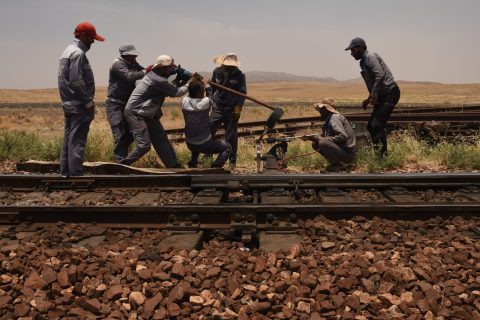Poland-Belarus rail border: things are still moving slowly

BRAND STORY – The situation at rail border crossings between Poland and Belarus is complex, given that it also acts as the EU border. Denser bureaucracy and increased inspections are causing delays and issues for many customers using these routes. RailFreight.com had a chat with Barbara Wójcik, Cargo Deputy Director at Adampol SA, which manages a transshipment terminal located in the Free Customs Zone at the Malaszewicze-Brest border crossing.
Wójcik highlighted the difference between operations at the German-Polish border and the Polish-Belarusian one. “There are no problems on the Polish-German border because there are currently no procedures implemented there. But there are a lot of problems on the Polish-Belarusian border”. What are these procedures on the Polish border with Belarus?

4 main procedures
Wójcik underlined that there are four main customs procedures for rail transport between Poland and Belarus. Export customs procedures, import/free circulation procedures, external transit procedures and SMGS railway documents. On the other hand, when crossing the border between Germany and Poland, customers only need to provide the CIM consignment note, which proves the conclusion of a transport contract with a railway undertaking.
The first one applies to EU exports with the possibility of having a 0 per cent VAT rate. The customs import procedures assign non-community cargo the status of community goods. The external transit procedure allows for the movement of goods originating outside of the EU within the union with the suspension of customs duties. Lastly, the SMGS number form is a document valid in the Eurasian Economic Union that allows goods to be moved between the EU and countries involved in the Eurasian Customs Union.
Too much bureaucracy, not enough knowledge
Frequent and prolonged inspections have been identified as the main problem on this EU border. “Lengthy checks carried out at the borders block terminals, inspection possibilities of officers, and as a result, the throughput of these crossings”, Wójcik explains. In addition, customers often fail to provide an Economic Operators Registration and Identification (EORI) number. Without the EORI number, the Adampol SAemployee pointed out, exporting or importing goods is not possible.
Customers are also not always aware of the available options when it comes to transporting goods between EU and non-EU areas. Wójcik: “There is very little knowledge of the possibilities of using Free Zones”. A Free Zone is an enclosed area in the EU where goods from outside the Union can be introduced free of import duty and commercial policy measures.
Adampol SA operates one in Malaszewicze as well as one in Gdansk. It also runs its own customs agency and is able to carry out phytosanitary inspections. Today, Adampol SA is one of the hosts of the RailFreight Summit tour to Malaszewicze today. Participants will be able to see how they operate, and enjoy lunch at their site.
What about paperless customs operations?
“Customers perceive electronic documentation very positively”,Wójcik notes. However, trading with countries outside of the EU still makes the implementation of paperless customs operations complicated. When doing business with Belarus and other countries from the Eurasian Economic Union, all documents still need to be in paper form and often the original documents are required.
Wójcik mentions that electronic documents would “greatly facilitate the entire process related to customs procedures”. By having documents circulating online, customs clearance times could be significantly reduced and would also be more eco-friendly than having these documents printed on paper. “When it comes to the external EU border with Belarus, it would be much easier to introduce electronic documentation”, she concludes.






